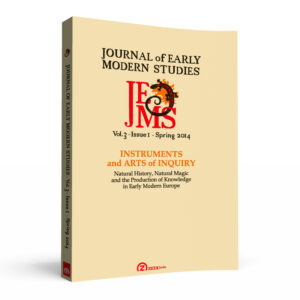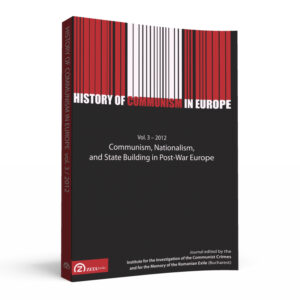CONTENTS
Articles:
Adamas Fiucci (“Gabriele d’Annunzio” University), The Role of Solitude in Pierre Charron
- Abstract: This article aims to examine Pierre Charron’s conception of solitude, a task which is complicated by the fact that this conception underwent several changes between the two editions of De la sagesse. Unlike the 1601 edition, the 1604 edition includes passages on the importance of the social dimension of the good life, which may look like an exhortation to actively participate in social life in order to acquire civil prudence. In order to clarify the Charronian position on this issue, I undertake a comparative analysis of the two editions of De la Sagesse, as well as an enquiry into the letters sent to a Doctor of the Sorbonne and to Gabriel Michel de La Rochemaillet, in which Charron deepens his reflections on solitude. I will show that Charron describes solitude not only as a physical separation from a civil context, but also as an emotional autonomy which can be reached everywhere. Charron’s perspective on solitude is also the result of his reading of previous philosophers, such as Seneca, Aristotle and Michel de Montaigne, as well as an analysis of Renaissance discussions of the active and contemplative lives.
Stefan Heßbrüggen (National Research University Higher School of Economics, Moscow), The Young and Clueless? Wheare, Vossius, and Keckermann on the Study of History
- Abstract: In their debate on whether or not the young should be allowed to study history, Degory Wheare and Gerhardus Vossius quote Bartholomäus Keckermann and state that he wants to exclude the young from studying history, Wheare arguing for Keckermann’s purported position, Vossius opposing it. Their disagreement is part of a larger controversy on the relevance of history for moral instruction in general, contemplating the question whether or not history is best understood as ‘philosophy teaching by example.’ But the interpretation of Keckermann’s position presupposed by both Wheare and Vossius is wrong. Keckermann’s Ramist predecessors argued against a central presupposition of Wheare’s views, i.e., the exclusion of the young from studying moral philosophy. Keckermann’s own position in this regard is not fully clear. But a closer analysis of his distinction between methods for writing and for reading history shows that Keckermann did want the young to study history. If Keckermann had believed that such exclusion were necessary, it could only have been related to reading historical texts, not to writing them: writing texts about historical figures or events does not require moral precepts, but only the application of certain logical tools. But a view that implies that writing a historical text should be possible for students, whereas reading such a text would go beyond their capabilities, is absurd. Hence, we can assume that Keckermann expected the young to study both history and moral philosophy.
Stefano Di Bella (University of Milan), Thinking, Time and the Essence of Mind in the Descartes-Arnauld Correspondence
- Abstract: The 1648 exchange between Descartes and Arnauld focuses on several distinct but intertwined topics concerning Descartes’s philosophy of mind. Descartes’s acknowledgment of thinking as the essence of the mind implied a strong ‘actualist’ view of this essential activity. Arnauld’s objcetions reveal the problematic implications of this ontology of mind, from the role of memory and the temporal nature of our thought to the radical challenge of giving the status of an essence to such a temporal activity.
Guido Giglioni (University of Macerata), Orlando, Perseus, Samson and Elijah: Degrees of Imagination and Historical Reality in Spinoza’s Tractatus Theologico-Politicus
- Abstract: Historia, as both a type of critical inquiry and a source of information about nature and the human world, is a key category in Spinoza’s Tractatus theologico-politicus (1670). In this work, the Latin word cannot be simply and invariably translated as “history,” not even if we add the proviso that its meaning wavers inevitably between “history” and “story,” for its semantic range is too broad and complex. At the two ends of the semantic spectrum we have the impartial report, on the one hand, and the creations of sheer fantasy (phantasmata and nugae), on the other. Historia may therefore denote the detached observation of nature and the philological analysis of a text, but it can also refer to the free exercise of the imagination in a variety of narrative contexts. While Spinoza denies that the inquiry resulting from historia and its products may have true cognitive value, he acknowledges that historia plays a fundamental role in society and politics. The reason is that historia and the imagination are bound up together by a special relationship. This is apparent at all levels of the historical engagement with reality (description, criticism and fiction), but is particularly true in the case of religion, moral norms and belief systems, for in this variegated domain the link between imagination and historia functions as the connective tissue that keeps societies united and functioning. This specific nexus of imagination and historia is Spinoza’s original contribution to the early modern notion of “moral certainty.” More importantly, it is only at this level that Spinoza grants a modicum of intelligibility (perceptibilitas) to the ‘historical’ productions of the imagination, be they signa, revelationes, or even nugae. The fact remains, though, that to a certain extent humans keep having a distorted grasp of reality, indeed hallucinate, even when their ‘historical’ accounts of reality are socially and politically productive. Here the key element is the notion of fictional continuity based on a socially constructed trust (fides historiarum) in narrative accounts of reality: the imagination turns reality into stories, but in so doing it keeps the otherwise constitutively hallucinatory nature of humans at bay and under control. Perceptibilitas, that is, the ability to provide acceptable cognitive solutions between intelligible knowledge and moral certainty, is ultimately what defines the contribution of the imagination to the human work of knowledge.
Eduard Ghiṭă (University of Louisville), Theological Underpinnings of Joseph Addison’s Aesthetics
- Abstract: Joseph Addison’s Spectator papers on the imagination have been read as a landmark in the development of aesthetic disinterestedness (Stolnitz). But this is problematic in light of Addison’s theological concerns, particularly as they bear on the final causes of aesthetic pleasures. This teleology of the aesthetic is far from a Kantian understanding, but rather part of a larger discourse of physico-theology. By drawing on the work of Zeitz and Mayhew, among others, this paper shows how Addison’s theological underpinnings of the aesthetic raise the broader question of the role theology played in the emergence and evolution of philosophical aesthetics. In eighteenth-century Britain, the aesthetic belonged to a disciplinary matrix comprising a set of confluent discourses, one of which was theology. Drawing on and expanding M.H. Abrams’s scheme, which explores how concepts such as ‘contemplation’ and ‘disinterestedness’ migrated from theology to aesthetic theory, this paper suggests that the concept of ‘aesthetic pleasure’ underwent a similar transformation. With Addison, the pleasures afforded by the imagination (greatness, novelty and beauty) acquire a new dominant position which allows one to speak of a text in modern aesthetics instead of a manual of Christian apologetics.
Edward Slowik (Winona State University), Reconsidering Kantian Absolute Space in the Metaphysical Foundations of Natural Science from a Huygensian Frame
- Abstract: This essay explores Kant’s concept of absolute space in the Metaphysical Foundations from the perspective of the development of the relationist interpretation of bodily interactions in the center-of-mass reference frame, a strategy that Huygens had originally pioneered and which Mach also endorsed. In contrast to the interpretations of Kant that stress a non-relationist, Newton-inspired orientation in his critical period work, it will be argued that the content and function of Kant’s utilization of this reference frame strategy places him much closer to Huygens’ relationism than the absolute notions of space and motion favored by Newton and Euler.
Reviews
Richard F. Hassing, Cartesian Psychophysics and the Whole Nature of Man: On Descartes’s Passions of the Soul, London: Lexington Books, 2015 (Barnaby R. Hutchins)
Alec Ryrie and Tom Schwanda (eds.), Puritanism and Emotion in the Early Modern World, Palgrave Macmillan, 2016 (Irina Georgescu)
Natalie M. Philips, Distraction: Problems of Attention in Eighteenth-Century Literature, Baltimore: Johns Hopkins University Press, 2016 (Alexandra Bacalu)
ISSN: 2285-6382 (paperback)
ISSN: 2286-0290 (electronic)
ISBN: 978-606-697-053-2 (paperback)
ISSN: 978-606-697-054-9 (electronic)
The publication of this issue is supported by a grant of the Romanian National Authority for Scientific Research, CNCS – UEFISCDI, PN-II-RU-TE-2014-4-1776, An Intellectual History of the Imagination: Bridging Literature, Philosophy and Science in Early Modern and Enlightenment England.






